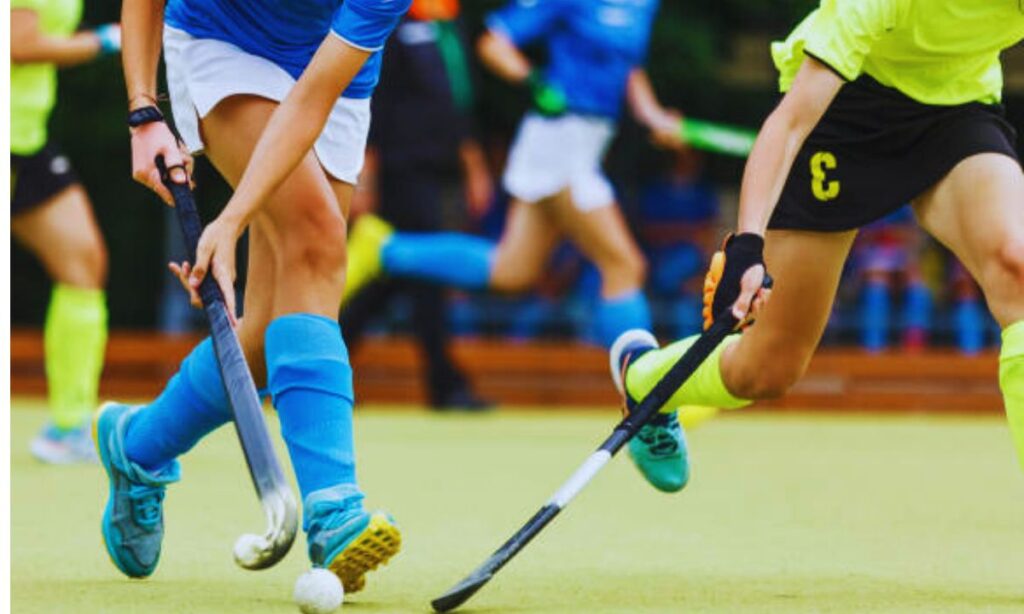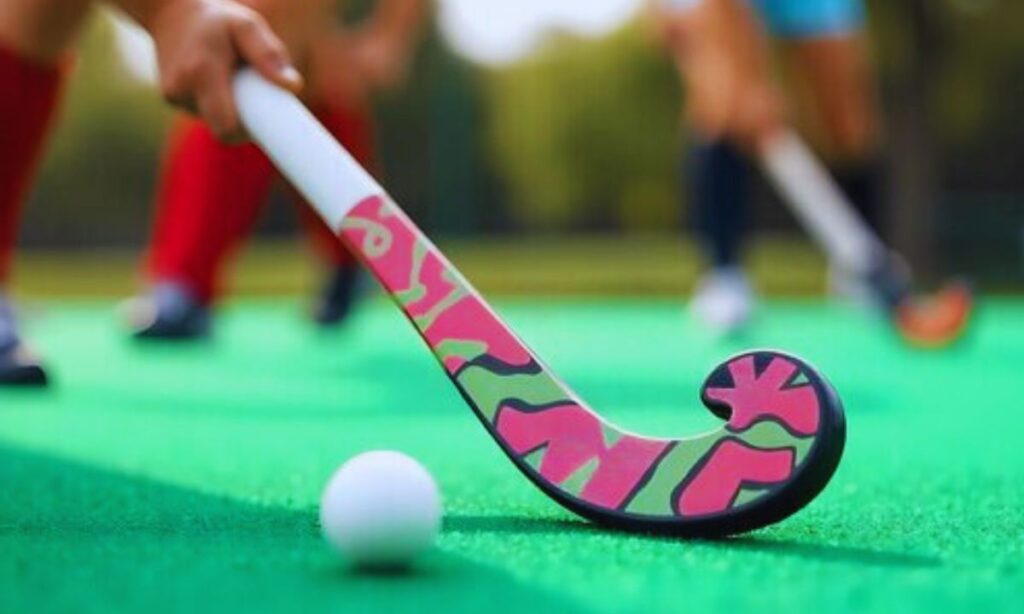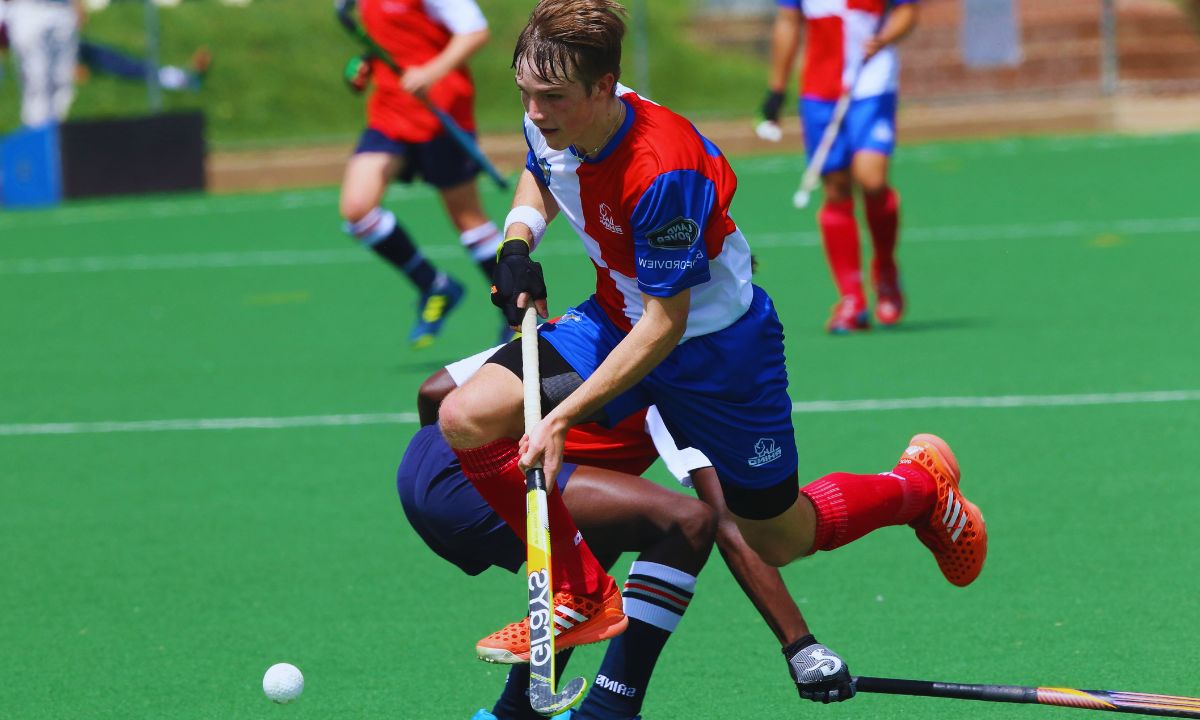The hockey stick isn’t just a piece of equipment. It’s your partner in every pass, shot, and tackle. Understanding the features that define a professional hockey stick helps you perform at your best. Whether you’re upgrading your gear or buying your first serious stick, this guide will walk you through every detail. From material composition to shape and balance, these features impact how you play. Picking the right stick isn’t about following trends; it’s about understanding what works for your game. Let’s break it down step by step.
Material Composition – The Foundation of Quality
Carbon Content and Power
Professional hockey sticks are typically made from composite materials, with carbon fiber being the gold standard. The higher the carbon content, the more power you get in your shots. A stick with 90–100% carbon offers stiffness and sharp responsiveness, which is ideal for elite-level players.
Fiberglass and Durability
While carbon gives power, fiberglass adds durability and flexibility. Many high-end sticks blend both. Fiberglass helps absorb shock and makes the stick more forgiving, especially in rough games or training sessions. A balance of both materials is key for serious players.
Stick Bow – The Curve that Changes Everything
Low Bow vs. Mid Bow
The bow refers to the curve of the stick from handle to toe. A low bow (closer to the toe) suits drag flickers and players who love aerial skills. A mid bow is better for all-rounders who need versatility. Choosing the right bow enhances your specific skills.
How It Affects Performance
The stick’s bow impacts how you lift the ball, pass, and shoot. For example, drag flick specialists prefer low bows for better leverage. Understanding your style helps you choose a bow that supports your strengths and minimizes weaknesses.
Weight Distribution – Light but Balanced
Importance of Balance Point
Professional sticks are designed to feel light yet powerful. The balance point—the spot where the stick evenly distributes weight—is crucial. A stick that feels too head-heavy may slow down your dribbling. One that’s too light in the head may lack power.
Player Position and Weight
Forwards often prefer lighter sticks for speed and agility. Defenders may choose heavier sticks for strength and block power. Understanding your position helps you pick the right weight and balance to match your needs.
Shaft Shape and Feel
Standard vs. Concave Shaft
Modern professional sticks may feature concave shafts to aid control and flicking. Concave shafts allow the ball to nestle in for longer, making passes more accurate. Standard shafts are still used for their simplicity and comfort.
Tactile Feedback and Control
The shape of the shaft also affects how the stick feels in your hand. Look for textured finishes or ergonomic grips. These small details enhance ball feel and give you confidence with every move.
Head Shape – Play Your Style
Maxi vs. Midi Heads
Maxi heads are popular in professional-level sticks because they offer a larger surface for trapping and hitting. Midi heads, on the other hand, are lighter and quicker, great for speedy midfielders.
Surface Area and Ball Control
The head shape influences how much control you have over the ball. A wider head gives more stopping power, while a narrower one helps with precision. Pick based on your preferred style—whether it’s control or flair.
Grip and Handle Comfort
Grip Texture and Length
A good grip enhances control and comfort. Professional sticks often come with anti-slip, cushioned grips. Some players also rewrap their grips to match personal preferences. Longer grips can help with two-handed play.
Sweat and Weather Resistance
Make sure the grip material handles sweat and wet conditions well. This ensures the stick stays firmly in your hands during crucial moments in the game, regardless of the weather.

Stiffness and Responsiveness
What Stiffness Means
Stiffer sticks flex less and return more energy on impact, making shots more powerful. This is ideal for advanced players who want maximum output from their swing. Softer sticks offer more forgiveness but less response.
Testing Responsiveness
You can test responsiveness by hitting the ball against a wall or turf. A good stick will offer a clean, crisp rebound without too much vibration. This tactile feedback matters during high-pressure games.
Brand Reputation and Innovation
Trusted Professional Brands
Brands like Grays, Adidas, and Osaka dominate professional fields because of their proven performance. When choosing a stick, always check for brand reviews and player testimonials.
Innovation in Design
Top brands continuously evolve, introducing new shapes, weights, and materials. Keeping up with these innovations ensures you stay competitive and aligned with the best gear in the market.
Stick Length – Fit for Function
How to Measure Correctly
The ideal stick length should reach your hipbone when standing. Too long, and you’ll lose control; too short, and your posture suffers. The correct length improves both comfort and performance.
Adjusting for Style
Some players prefer a slightly longer or shorter stick based on their role. Defenders may choose longer sticks for reach, while attackers prefer shorter ones for control. Personal preference is key.
Toe Shape and Touch
Hook, Maxi, and Midi
Toe shape impacts how you handle the ball. Hook toes are curved and ideal for reverse stick work. Maxi toes offer a balance between control and power. Midi toes are great for quick touches and dribbling.
Ball Handling Benefits
Each toe shape offers a different kind of touch. Professional players often experiment with different shapes during training to find the one that complements their unique technique.
Finish and Coating
Smooth vs. Textured Finish
Some professional sticks come with a textured face for added grip on the ball, especially during wet games. Others prefer a smooth finish for quick movements and clean hits.
Protective Coating
Top-tier sticks are finished with UV-resistant and water-resistant coatings. This prolongs the life of the stick and ensures consistent performance regardless of the conditions.
Price vs. Performance
What Are You Paying For?
Professional sticks range from mid-level to premium prices. The cost usually reflects the materials used, brand name, and design innovations. Don’t assume expensive always means better—but quality often comes at a price.
Investment vs. Budget
If you play regularly, investing in a high-quality stick pays off over time. For occasional players, a mid-range stick with a few professional features might be enough. Choose based on your commitment.
Real-World Testing and Reviews
H3: Why Reviews Matter
Don’t just trust product specs. Read reviews from other players in your position or skill level. These insights offer real-world feedback that specs can’t convey.
Try Before You Buy
If possible, try out a few sticks at your club or local store. Testing gives you a better idea of how the stick feels and performs in action.
Customization Options for Professional Sticks
Tailoring to Individual Playing Styles
One standout feature of a professional hockey stick is how customizable it can be. Advanced players often modify grips, adjust weight distribution, or even personalize the stick’s graphics. Brands now offer semi-custom options where you can select the bow type, head shape, and shaft flex to match your game. This level of personalization ensures the stick feels like an extension of the player’s hand. Customization is no longer just for pros—it’s accessible for any dedicated player who knows their style. If you’re investing in a top-tier stick, make sure it suits you, not just the market trend.

Flexibility vs. Rigidity in the Shaft
The Balance Between Power and Precision
Professional-level sticks are designed with an optimal blend of flexibility and stiffness. This balance is crucial because a shaft that’s too flexible might delay your shot release, while one that’s too rigid may lack the subtlety for soft touches and dribbles. Most elite sticks offer “low kick points,” where the stick flexes closer to the blade, enabling fast, controlled passes. Others are stiffer through the length, made for strong slap shots and drives. Testing different levels of rigidity helps you discover what suits your style—whether you’re a power striker or a tactical playmaker.
Aerodynamics and Stick Shape
Reducing Drag for Smoother Play
The shape and contour of a professional hockey stick are carefully engineered to reduce air resistance and increase control. Slimmer shafts, low-profile heads, and curved designs allow for quicker swings and smoother movement through the air. This aerodynamic refinement gives players a slight but meaningful edge, especially at fast game speeds. A stick that cuts through the air more efficiently reduces effort and boosts performance. When shopping for a pro stick, don’t overlook design contours. Sleek shapes do more than look cool—they support the pace and rhythm of elite-level play.
Vibration Dampening Features
Keeping Your Hands Comfortable on Impact
One often overlooked feature in professional hockey sticks is vibration dampening. When you strike the ball hard, especially on turf or during tackles, vibrations can travel up the shaft into your hands. This can be uncomfortable or even painful over time. Top-tier sticks include inner foam linings or layered materials that minimize these vibrations. Some sticks use aramid or Kevlar blends for added cushioning. The goal is to keep your grip stable and comfortable, even during aggressive play. This technology helps reduce fatigue and keeps your hands fresher for longer periods.
Control Zones on the Face
Engineered Touch for Every Play
High-end hockey sticks sometimes feature specialized control zones on the stick face. These areas are textured or slightly raised to enhance grip on the ball. Whether you’re receiving a fast pass or executing a reverse stick shot, these zones help with ball retention and control. They can also aid in drag flicking, giving the ball extra spin or lift. While subtle, these features can make a noticeable difference in competitive play. If your playstyle relies heavily on touch and finesse, choosing a stick with engineered control zones is a smart move.
Color and Visual Aesthetics
More Than Just Looks
While performance is king, the visual design of a hockey stick also matters. Professional players often choose sticks with colors and designs that reflect their personality or team spirit. Some argue that confidence increases when you like how your gear looks. Bright colors may also provide better visibility for teammates during quick passes. Some sticks even come with matte or glossy finishes, which can affect grip in different lighting or weather conditions. Though purely aesthetic, these features play a subtle psychological role in how players feel on the field.
Durability Under Pressure
Built for Game-Day Challenges
Professional hockey sticks must withstand aggressive play, including heavy tackles, turf abrasion, and wet conditions. The best sticks are engineered to hold up under intense pressure without splintering or warping. Carbon layering, fiberglass reinforcement, and strong resins all contribute to enhanced durability. Investing in a professional stick means you get reliability as well as performance. It’s not just about how well the stick plays today—it’s about whether it performs the same way next month, after countless hours of games and practice. Durability is a core feature that separates professional gear from the rest.
Tournament-Ready Specifications
Approved Dimensions and Materials
All professional hockey sticks must adhere to rules set by governing bodies like the FIH (International Hockey Federation). That means certain limits on length, weight, and materials. When you buy a professional stick, you’re not just getting elite performance—you’re also getting assurance that your stick is legal in official matches. This is critical for players competing in state, national, or international tournaments. Make sure the stick you choose is certified or approved for competitive play. Even the best stick is useless if it doesn’t meet regulations.
Environmental Considerations
Eco-Friendly Innovations
Some leading brands are now exploring sustainable materials in the construction of their hockey sticks. While carbon fiber is still dominant, a few companies have started using recycled composites or eco-friendly production methods. This shift doesn’t sacrifice quality but shows growing awareness around sustainability in sports gear. For players who care about their environmental footprint, choosing a stick from a responsible manufacturer adds another layer of value. As technology evolves, expect more green alternatives to enter the market, proving you don’t have to trade performance for planet-conscious choices.
Final Buying Checklist
What to Remember Before You Choose
Before committing to a professional hockey stick, review the features that matter most to your game: material composition, weight, bow shape, head style, shaft grip, and player position. Try to test different sticks, read expert reviews, and, if possible, get feedback from coaches or seasoned players. Remember, no stick is perfect for everyone. The best professional hockey stick is one that complements your playing style, enhances your strengths, and minimizes your weaknesses. Make your purchase informed—not influenced—and your performance will thank you for it.
Final Thoughts – Find What Fits You
Choosing a professional hockey stick isn’t about chasing the most expensive or trending option. It’s about understanding the features that define a professional hockey stick and matching them to your game. The right combination of materials, weight, bow, and grip will elevate your performance and confidence. Know your game, understand your gear, and let your stick be an extension of your skill on the field.

